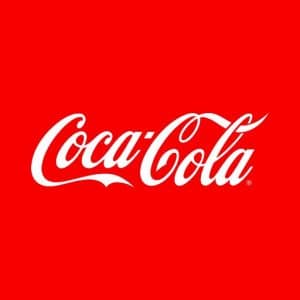 A recent survey we conducted polling 14 international accelerators concluded that one of the top three reasons for business failure was a poor product-market fit. The owners of these accelerators make it their business to recognize and know when this problem emerges among their clients.
A recent survey we conducted polling 14 international accelerators concluded that one of the top three reasons for business failure was a poor product-market fit. The owners of these accelerators make it their business to recognize and know when this problem emerges among their clients.
They all agree that startups generally do not do enough testing to find out where their product fits. On the contrary, many are so in love with their products and their designs, they are so sure that the market will love it, and they are so egged-on by all their friends and relatives who think their product is cool, compelling, and will be in demand, that they simply enter the market and expect their product to sell on its merits. It doesn’t!
When they launch their product, sales are not what they expect. Sometimes the market doesn’t understand their product. More often the retailers don’t understand what category to put the product in. If they put it in the wrong category or in the wrong venue, it simply won’t mesh with the market for which it was intended. Their end user may not even shop in that category or that store. Basically, they got their product into the store, but it’s in the wrong place in the store. So, it’s lost!
At Barefoot Wine, we lucked out because we were broke and ignorant of our industry. As a result, we had no choice but to approach the market-fit challenge in reverse! Instead of creating a product and trying to fit it into the market, we had to do just the opposite. We went to the market and interviewed several top chain store buyers. We asked them, “Just tell me what you want!” And they did!
At the time we didn’t know much about marketing, but those buyers had given us the keys to positioning our product so that it would not only gain access to the market where there was a relative void, but where it would address the greatest unfulfilled need in the market. If we had been well-funded with extensive industry background, Barefoot Wine would not be here today.
We were forced to ask questions and be humble. More importantly, we were forced to listen. Buyers were giving us the conditions under which they would bring in a new product based on the market demand from where they sat as retailers rather than where we sat as producers. This enabled us to position our brand in ways we would’ve never dreamed of. And it worked! The DNA they gave us, that we applied to the Barefoot Wine brand, has been instrumental in making it the largest wine brand in the world today!
That’s not to say it was a slam dunk. There were many years of missionary work – even with the right positioning! Did I say we were broke? Consequently, we couldn’t afford advertising! So, we were inadvertently forced to sell outside the chains and the big-box stores for the first few years. The good news is that during that time we learned how to tweak the positioning of our brand so that when we finally made the big time, our act was together.
Having been through 20 years of brand building experience with a successful CPG brand, and another 10 years advising brand builders, we learned a thing or two about positioning, not from an academic standpoint, but from a practical, boots-on-the-ground standpoint. What then is our take on brand positioning?
A good way to start is with a positioning statement which is really a practical description of what your branded product does, how, why, and for whom. The positioning theory answers these questions in a practical way that fits into the format the market is already set up to accept and present products. It’s not just what you think and want your branded product to look and feel like, it’s what the market will accept at all.
So many new brands fail because they simply don’t fit into the way the market is already organized. The consumer brand builders behind those products don’t take into full consideration the rigidity of the distribution and retail system. They may have a great product that satisfies a real need, but they fail because they didn’t position their product in a way the market could understand and accept. The market only understands what it already knows. The question you get when you present your new brand is, “How does this compare to what else I am selling?”
In other words, they are asking you where it goes in the store. They’re asking you what other products it is like. And they’re asking you how it fits in to their already-established plan (also known as a planner, or schematic). This is the way retailers organize their thousands of products. They learned how to do this through trial and error and expert advice. The question is, “Where do you fit in?” And like the international accelerator owners agree, inappropriate product-market fit is one of the top reasons why new brands fail.
Brand positioning is the craft of choosing how your buyers see, discover, and access your product. It’s important to note that “positioning” is a gerund – a verb that acts as a noun and denotes progressive or continuous action. First, you have to decide where you want your brand to be, then you send off what we call queues to the buyer and the general public. These cues are the symbols, words, slogans, images, pricing, and distribution management that put your brand in a certain position relative to its competition.
The following are just a few of the tools in your brand positioning toolbox:
1. Appearance– Dress for success – Looks are important!
The way your product appears speaks volumes. It’s your customers’ first impression. It’s the image that your customer will remember. It’s how and why your customer will hopefully come back and buy your brand repeatedly. What is the message you are sending with your brand name, logo, label, packaging, color choices, trade dress, and catchphrase? Does it specifically address your ideal customer or is it too broad, confusing, or nebulous to make that connection?
Is your target market looking for quality, value, status, fun, security, or convenience? How does your total package convey that message? In our case, we were trying to convey value for money. We were up against a serious challenge because we were in the low-price category. We had to sell value in a category that suffered from a stigma of “cheapness.” In other words, we were up against the market prejudice that “Nothing good could come at a cheap price.”
We overcame this with our packaging. For instance, we use gold ink, applied awards and medals, used lots of white space, chose an elegant font style, and even though we put a foot on a wine label (that was considered radical at the time), we did it in a tasteful way. Our marketing materials constantly cited gold medal wins, accolades, and endorsements. But our price was still low. We also wanted to communicate fun and a carefree attitude and did that by choosing the barefoot as our logo.
2. Messaging– Say what you mean – Mean what you say
 Your message must be concise and compelling in every form of advertising, whether written, spoken, graphic or video. We like to say, “It must be honed down to the shortest number of grunts!” Why? Because your customer has a very short attention span and is being bombarded with hundreds of other messages from your competitors.
Your message must be concise and compelling in every form of advertising, whether written, spoken, graphic or video. We like to say, “It must be honed down to the shortest number of grunts!” Why? Because your customer has a very short attention span and is being bombarded with hundreds of other messages from your competitors.
Out of that panoply of noise, you must convince them to pick your message to listen to. There must be something about your message that deliberately gets their attention, something about your message that is exactly what they are looking for. And something about your message that compels them to make the decision to buy your branded product.
In the harsh realities of the marketplace, that message better be short, sweet, and impactful. It better be full of meaning and “Oh so true” in the mind of your customer. We think it comes down to ten words or less that position your brand in terms that will get their attention, identify with their needs, and communicate your solution.
In our case at Barefoot Wines, we had two messages each under 10 words: “Best Wine, Best Price” and “Get Barefoot and Have a Great Time! The first one was about the brand itself. We had to prove that we had the most third-party endorsements at the most popular price. The second one was set as a request with the double meaning. We were asking our customers to buy our brand – and to take off their shoes and relax. So here, we were appealing to a fun theme which was part of our positioning theory.
3. Distribution – “Where can I get it?”– “Look what I found!”
We like to say, “You can’t buy it if it isn’t there!” This obvious statement of reality in the retail space is often overlooked by brand builders. They assume that the “system” will automatically distribute, place, merchandise, reorder, and target the correct audiences. It won’t!
A big part of positioning is distribution management. Coca-Cola demonstrated this in their early days when they placed bottling plants near the military bases during World War II. After the war, they had strategic distribution points that enabled them to more efficiently access a much broader market.
One big question is, “Are you in front of the right group of customers?” Brand builders would do well to understand the demographics of the geographical landscape before putting their products in the stores. Every chain and box store in the world classifies their stores as A, B, C, or D stores. If, for instance, you are selling an upscale product, perhaps you only want to be in the A stores. You might be celebrating because you got into all of the stores in the chain, but your product won’t move in three-quarters of them. So, the buyer will discontinue you from every one of his stores. And that’s forever!
Do you want to position your brand as undependable, hard to get, or flaky? Of course not! So that’s why you must consider distribution management as a positioning tool. You can say all you want that your brand is dependable but when your customer finds it out-of-stock, she’s going to say it’s “undependable!” This is why you must do what you have to do in terms of merchandising, oversight, and sales support to keep your products in stock in every retail outlet where your products are located.
Many marketing professionals will bring the discussion about positioning down to one word, “pricing.” And, in a way, they have a point. In every category, there is a velocity price point that’s the price at which most products sell the fastest. Your customer already knows this velocity price point. When they see your price, they make an instant judgment. Is it higher or lower than the most popular prices for that particular item in that particular category?
We can talk for hours about pricing strategy, but for now, we will just say whatever price you choose, it will be a battle to achieve and maintain it at retail. Your product is moving through many hands that can make pricing decisions about your product on their own. these decisions can make or break your brand.
It’s your responsibility to understand what everybody in the distribution chain wants to “see on sale” (percentage of profit) and set your FOB pricing in such a way that it takes all of these “bumps” into consideration. This includes taxes, fees, transportation and other costs, so your ultimate shelf price will position your brand where you want to be. So, it’s not just about choosing a price as the marketing experts might lead you to believe. It’s more about executing and protecting that price through the distribution system all the way to the shelf!
4. Advertising– How you get the word out. – “I heard about this brand”
 Messaging is one thing, but how you convey that message and the method you use to do so, is equally important to the positioning process. Whether it’s radio, television, website, podcast, video, email campaigns, coupons, display ads, billboards, cross promotions, displays, or point of purchased advertising materials, or some or all the above, your choice is sending a message about your position.
Messaging is one thing, but how you convey that message and the method you use to do so, is equally important to the positioning process. Whether it’s radio, television, website, podcast, video, email campaigns, coupons, display ads, billboards, cross promotions, displays, or point of purchased advertising materials, or some or all the above, your choice is sending a message about your position.
Who listens, watches, or sees the particular vehicles that you choose to convey your message? Is the audience for that media relevant to your customer base? Is it a medium they normally frequent? Are some forms of communication more effective than others to get your message to your target market?
Whether the tree falling in the woods makes a noise or not is a moot question if nobody is listening.
We have found the most effective form of communication with the customer in the retail marketplace is the point of purchase. It’s the only place where your product, your customer, their money, and their decision all come together. It is your last chance to compel them to buy your product. And the space for this message is extremely limited if available at all. It’s usually no more than 3 inches wide and 3 inches long. What will you say in a such a confined space? So, it turns out in retail that the most effective form of communication is the most limited.
At Barefoot Wines, we used what we called Worthy Cause Marketing to get the word out. It was a form of advertising that made a statement about who we were, and what was important to us – that was also important to our customer. By supporting local worthy causes whose goals affected the customers who lived in the neighborhoods that surrounded the stores were our products were sold, we bonded with them and gave them a social reason to buy our product. They could’ve gotten any product in our category, but they chose to buy ours because we supported them and their goals. Our method of getting the word out spoke volumes about our company and our brand.
5. Behavior– It’s not what you say it’s what you do. – Walk the talk!
The practices and policies to which your company subscribes to source, manufacture and deliver your products are no longer secret. The more popular your brand becomes the more subject to public scrutiny your methods become. How you treat your employees, how you treat the environment, and your trade practices all reflect on your brand and your positioning. Because it’s not just how you would like to communicate the position of your brand, it’s how your customer wants to position themselves.
They want to believe that they are making a difference. They want to believe that they are making the world a better place. They don’t want to be supporting a brand that is hurting the environment, abusing their laborers, or practicing divisive or marginalizing policies. In other words, they know they are voting with their purchases they want to be seen as buying brands that make a difference.
Ironically, the more market penetration you achieve, the more newsworthy your behavior becomes. This is why it’s so important for brand builders to position their company in alignment with the goals and values of their customers. With the amount of information that is now readily available and seems to live forever, it’s hard for companies to un-ring that bell!
So, before spending a lot of money hiring that marketing specialist to position or reposition your brand take a look in your own backyard. Is it cleaned up? Are you ready to be transparent and demonstrate that you are doing the right thing for your brand, your customers, and your community?
Start with your positioning theory, then develop your positioning statement, then translate that statement into the tools that can position your brand to address your ideal target market. Go for the Bull’s-Eye!


